

Damion Smy
GWM Cannon Alpha ute, Tank 300 HEV and Tank 500 recalled
14 Hours Ago
You might have forgotten this little SUV exists, but it definitely leaves a lasting impression… for a few reasons.
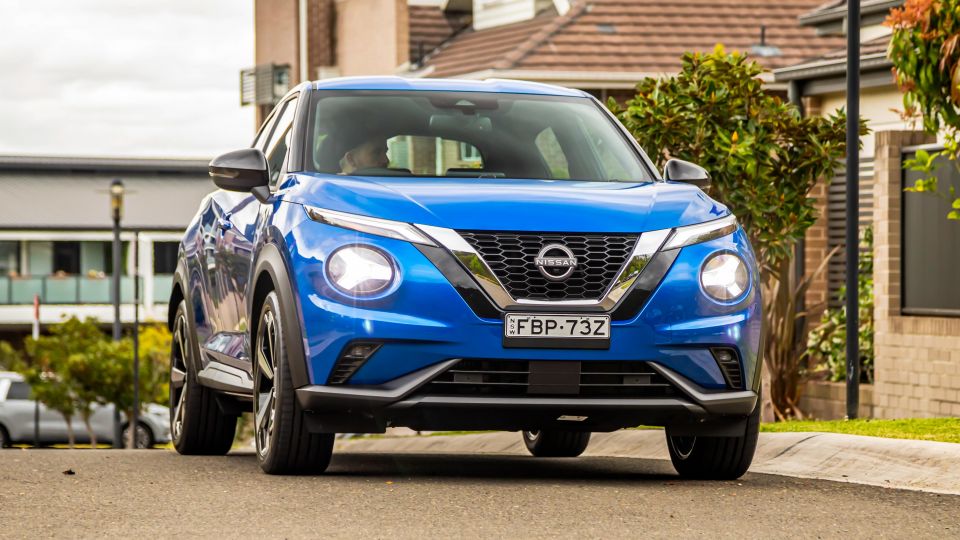
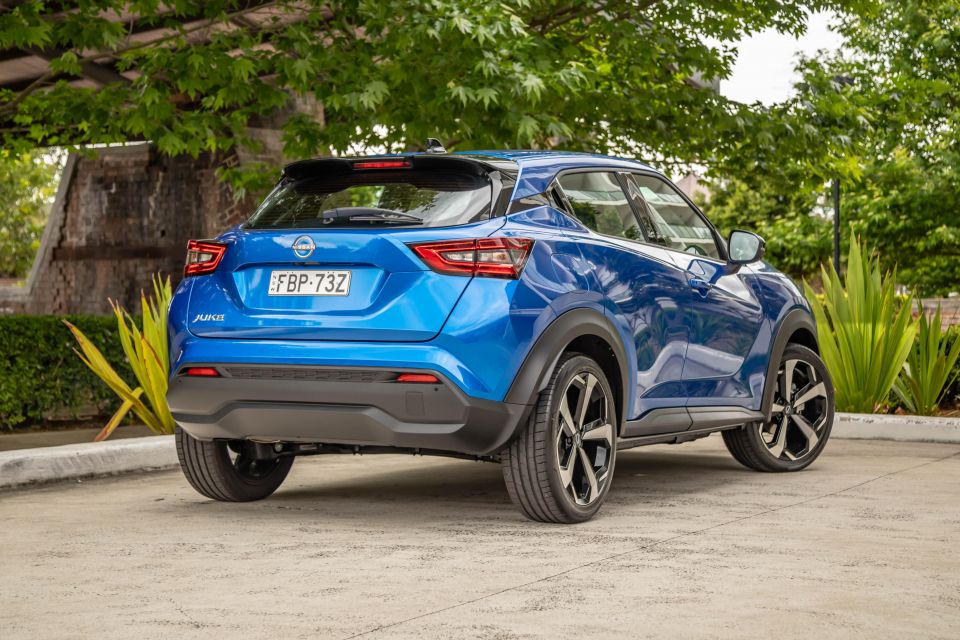

Quickly see how this car stacks up against its competition. Select any benchmark to see more details.
Where expert car reviews meet expert car buying – CarExpert gives you trusted advice, personalised service and real savings on your next new car.
The Nissan Juke has long divided opinion in Australia – people seem to either love the look, or hate it.
But now there are a number of ‘style-focused’, value-conscious new models that have launched since this generation Juke came out here in 2020. These include the GWM Haval Jolion, Chery Omoda 5, Ford Puma and new-gen (and closely related) Renault Captur – so the Juke looks a little more, er, ‘normal’, now.
Recently Nissan made some modest updates to the Juke range. The car had a slightly tweaked exterior appearance with a new-look grille and rear spoiler, some minor aerodynamic enhancements and updated Nissan badging.
You can read all about the changes to the updated Nissan Juke line-up here. We’re looking at the mid-spec ST-L in this review, which could be the pick of the range – read on and you’ll find out why.
The Juke ST-L lists for $34,440 plus on-road costs.

There’s not much in the way of options for the Juke range, but you’ll have to pay an extra $700 if you want Ivory Pearl White, Platinum Silver, Ceramic Grey (new), Gun Metallic Dark Grey, Pearl Black, Burgundy or the new Magnetic Blue hue seen here. Only Arctic White or Fuji Sunset Red are no-cost options.
The Juke isn’t a volume seller. To the end of September 2023, it hadn’t even managed a thousand sales nationwide, and indeed was the second-smallest selling model in the Light SUV category, according to VFACTS data. The car it was narrowly edging out was the Renault Captur, which is a sister model to the Juke, and the two share plenty.
Easily outgunning it for popularity are the Ford Puma ($30,840 to $36,390), the Toyota Yaris Cross ($28,000 to $39,000), and Volkswagen T-Cross ($30,990 to $33,990).That segment is dominated by the just-updated but still practicality-compromised Mazda CX-3 (from $26,800 to $38,620 MSRP).
But those more affordable Chinese-branded models mentioned above, which are categorised as a size larger than the Juke, also play hard on price. The Chery Omoda 5 lists from $29,900 to $32,900 before on-roads, and the GWM Haval Jolion (which is much, much bigger inside than any of the vehicles listed to this point) has a price sheet running from $28,490 to $40,990 drive-away.
Man, it’s hard to be a small SUV buyer. There are so many choices that, really, you’ll probably just buy the one you most like the look of! So I could see why the Juke could be the car for you: it’s got plenty of presence.
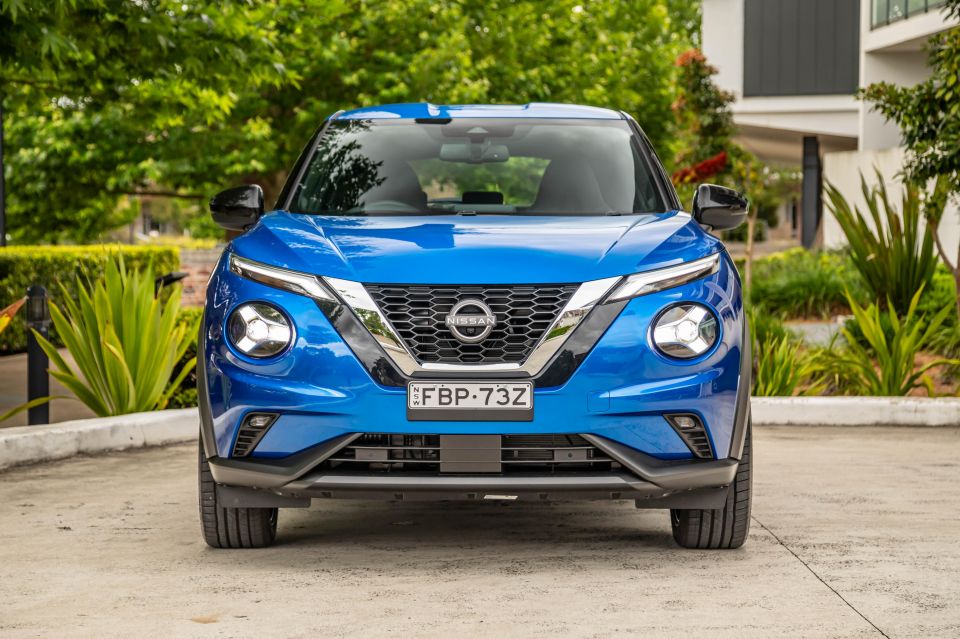
2024 Nissan Juke pricing:
Prices exclude on-road costs
Buy your new car without the stress. It's fast, simple and completely free.

Great service from Travis and team, second time I have used this business would not hesitate to recommend them to anyone
Craig C.
Purchased a Ford Ranger in Sunshine Coast, QLD
CarExpert helped Craig save thousands on his Ford Ranger, now let us save you on your next new car.
Find a dealIt’s a shame the interior is feeling a little outdated compared to the contemporary and cutting-edge exterior design. In fact, ever since this generation of Juke launched in Australia, I’ve thought the interior looked at odds with the exterior.
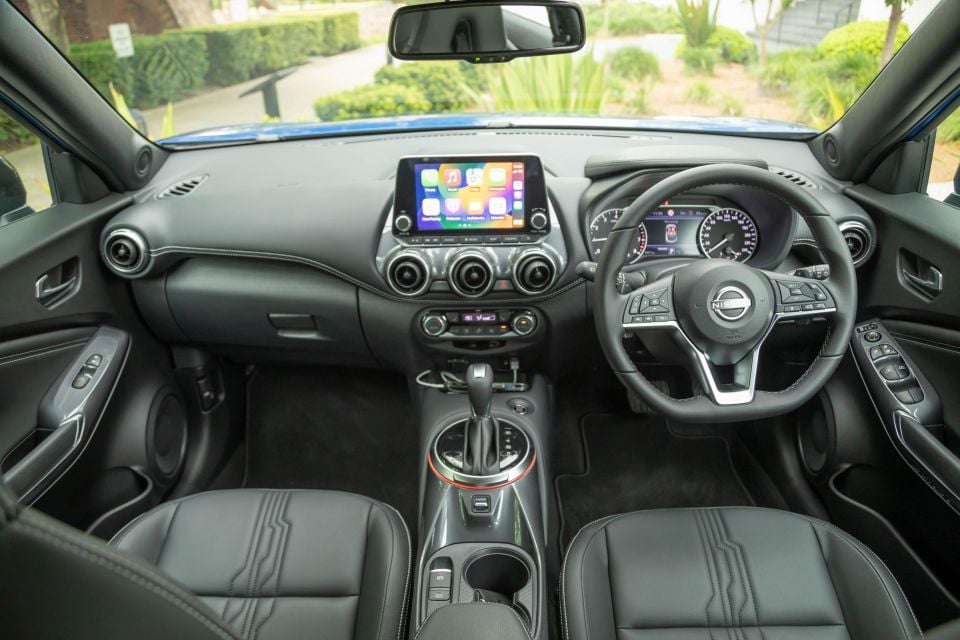
Sure, there are some elements that might have looked futuristic and funky when this car was being drawn in Nissan’s design studios in the years prior to 2020, but these days it certainly feels a bit more like a Nokia 3210 than a Google Pixel 8 Pro.
That phone analogy is actually a really good one because the old Nokia had some buttons, and these made things seem a lot simpler to operate. Whereas any new smartphone has so much functionality hidden in its screen (just like some newer small SUVs without buttons), that it can be difficult to know what you’re doing at times.
In the Juke it’s all very easy to understand the functional buttons for the media system, as well as knobs and dials for volume and tuning. These are complemented by on-screen menus which are very simple to understand. You can even use the right knob to cycle through those menus if you wish.
And down below the circular air vents is a climate control panel with buttons for the main functions and dials for temperature and fan control. Plus there are seat heater buttons too, which means no mucking around through a screen to get your tush nice and toasty!
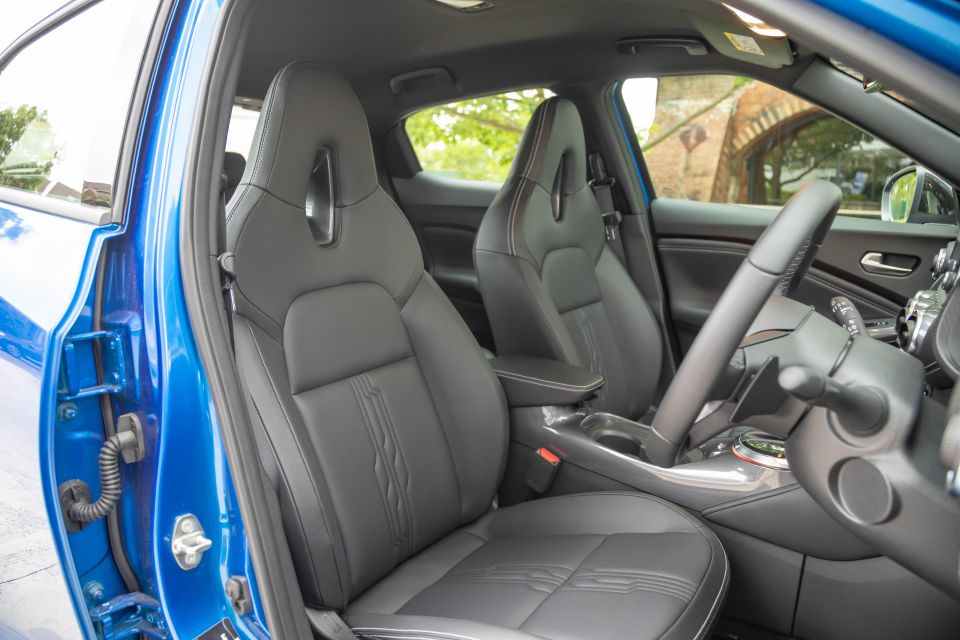
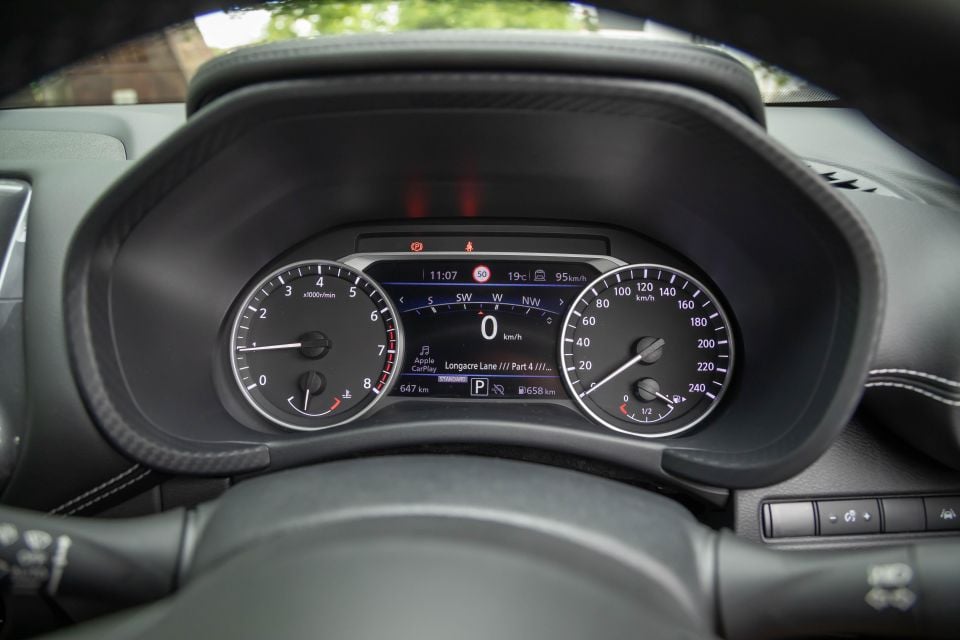
The driver gets a 7.0-inch digital screen within two conventional dials as part of the instrument cluster, all of which is very easy to interact with via the steering wheel mounted buttons. However, one annoyance that I have with that screen is that when you’re using adaptive cruise control, it defaults to show the distance setting rather than the digital speedo.
It is a bit annoying to have to press the steering wheel direction buttons a few times to get back to the digital speedo screen so you can keep an eye on your pace.
The steering wheel does have a beautiful flat-bottom design to it, which makes it feel a bit sporty to hold onto, and the materials used throughout the cabin are of a decent quality. This is despite Nissan labeling its seat trim as PVC (a.k.a. vinyl) with leather-accented parts.
There’s also that same sort of vinyl trim on the padded armrests of the doors and the centre console bin in the front.
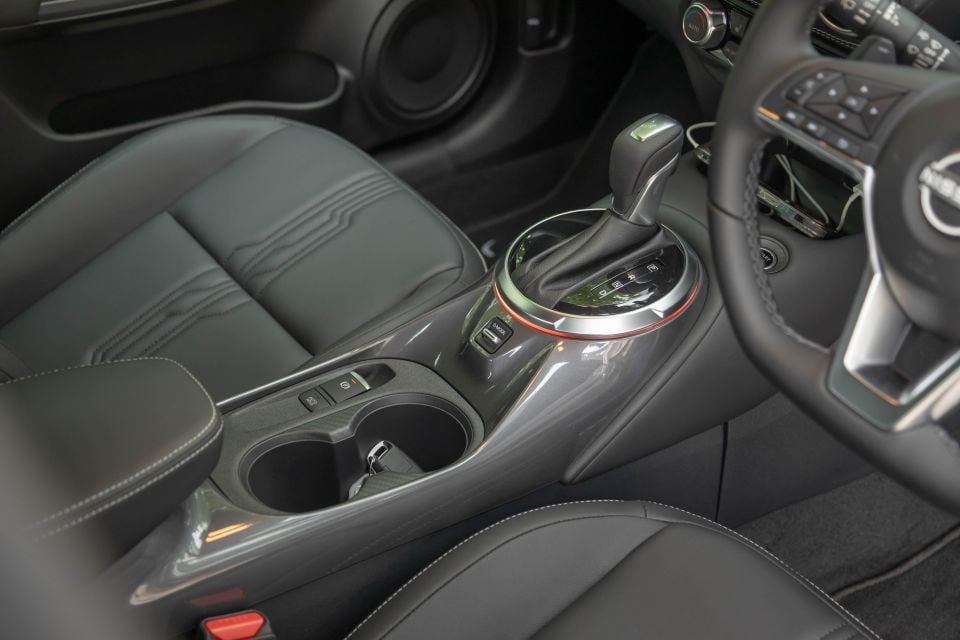
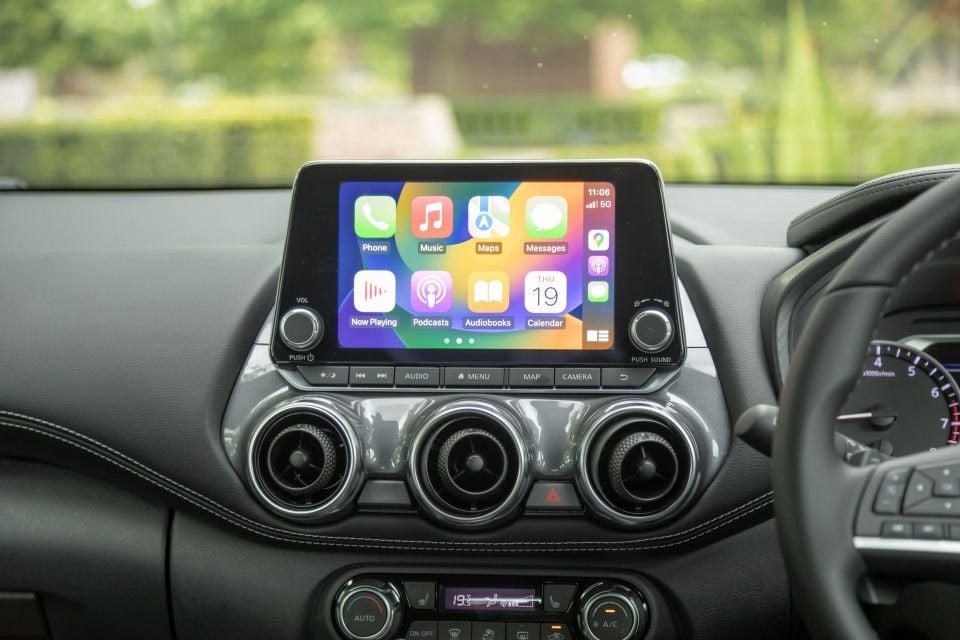
Up front you also have a small storage caddy in front of the gear selector, but no wireless phone charging. There are cupholders between the seats, a small covered centre console bin, and door pockets with bottle holsters.
There’s one USB-A port upfront, and one in the back for passengers to keep their devices charged.
Also interesting is the sculpting of the dashboard in front of the passenger’s knees, because it does allow you to make more use of the cabin space if you were to have rear seat occupants.
The scalloped design means that you can – if required – fit a rearward-facing baby capsule in the back (I’ve done it before), or a forward-facing baby seat, and still have a six-foot tall (182cm) adult sit in front.
This is so long as they are okay with sitting quite close to the dashboard.
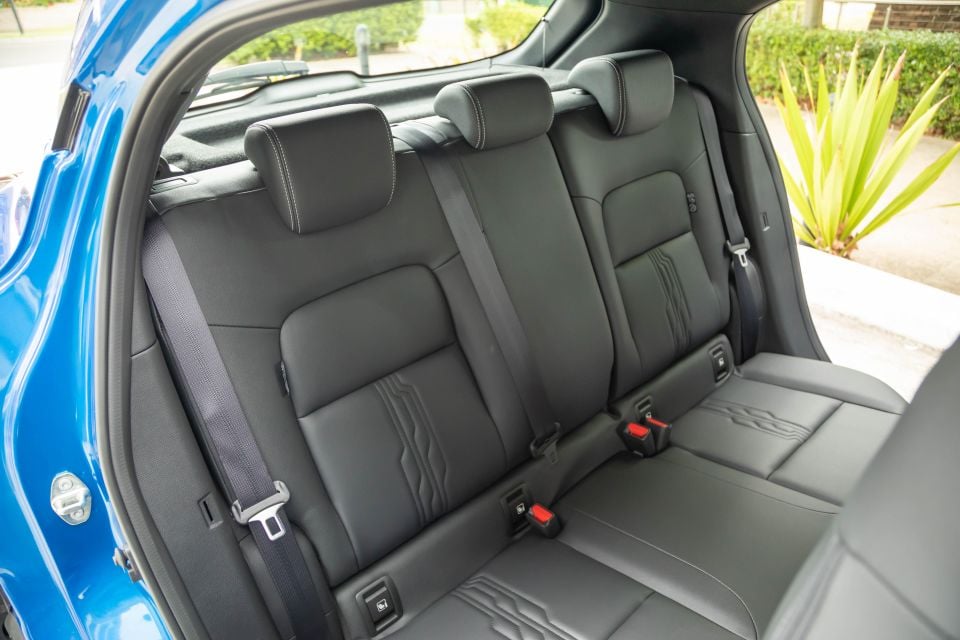
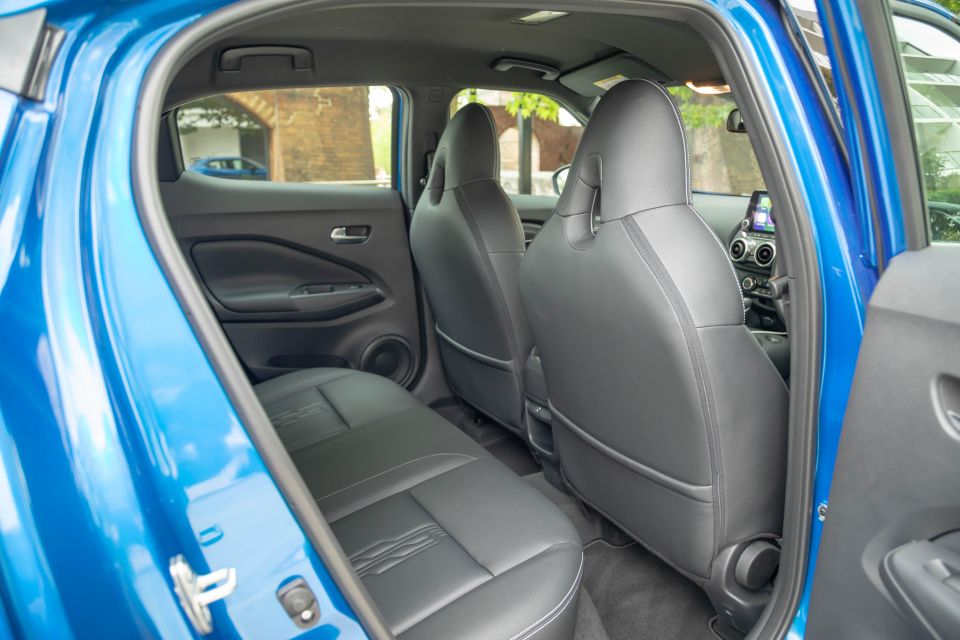
There is enough space for smaller adults to slide in behind taller ones, but don’t expect it to be as accommodating in the back row as say a GWM Haval Jolion… and nor does it have the clever sliding seat mechanism that you’ll find in a VW T-Cross.
The backseat is lacking a few amenities – there are no directional air-vents, and there is no fold-down armrest, nor cupholders.
You get bottle holders in the doors, a pair of map pockets on the seat backs, a small storage tray in the middle console, and the aforementioned USB port.
Boot space is a surprise too, rivalling the likes of the Skoda Kamiq and Ford Puma for practicality points.
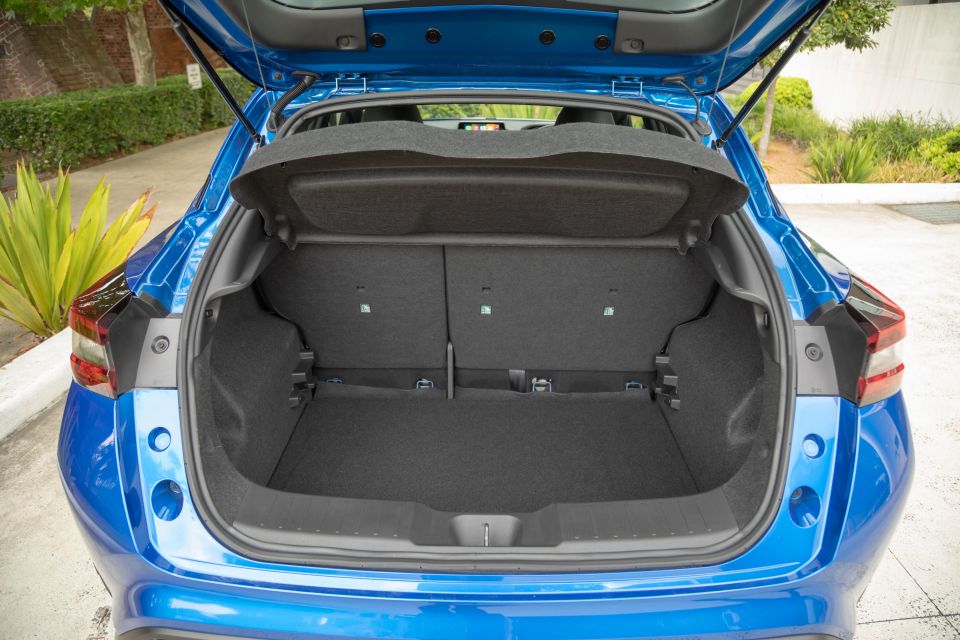

There’s a new luggage board that has been implemented for this updated model, and that allows you to either have a level load in place lined up with the boot lip (but much smaller capacity for cargo) or you can lower it down and you’ll have an exceptional 422 litres of boot space on offer with the seats up, and 1305L with them folded down.
All versions come with a space-saver spare wheel, plus there are a couple of shopping bag hooks in the boot, too.
The Nissan Juke is only available with one motor in Australia – a 1.0-litre turbocharged three-cylinder engine producing 84kW of power (5250rpm) and 180Nm of torque (2400rpm). The Juke is front-wheel drive only.
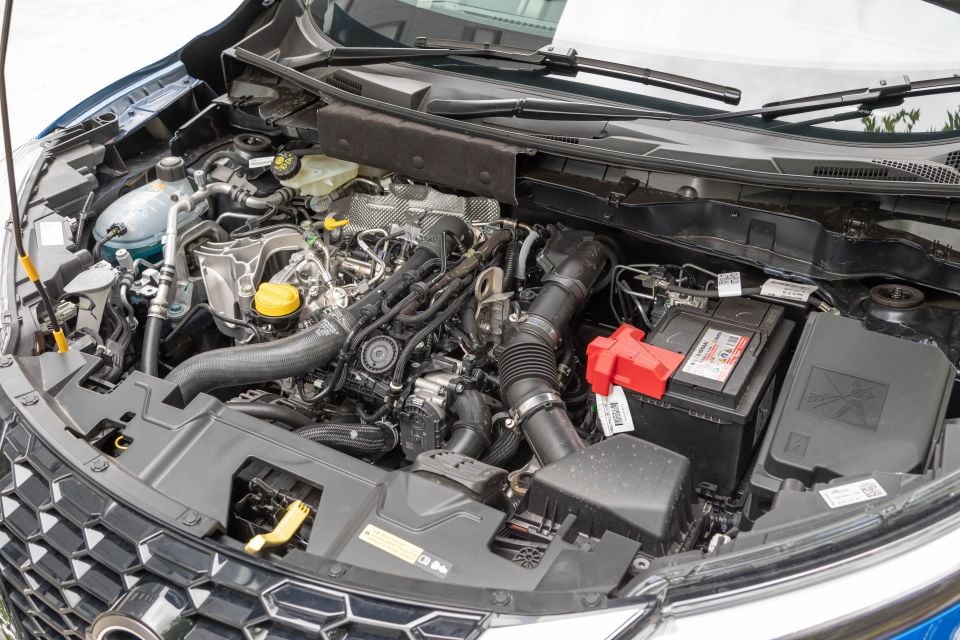
As you may have guessed by that torque hotspot being fairly high in the rev-range, this car has some issues with low-speed hesitation.
The turbo lag is only further exacerbated by the seven-speed dual-clutch automatic gearbox and engine start-stop technology. However, there are ways around it, for the most part – more on that in a bit.
As for fuel efficiency, all Juke models have an official combined cycle fuel consumption rating of 5.8 litres per 100km.
Over a week of testing the trip computer was indicating 6.8L/100km over a mix of urban, highway and back roads. I did see 5.5L/100km on a longer highway run, though, which is pretty frugal.
From its exterior styling you would guess that this is designed to be a pretty angry little ant of a car to drive, and in some ways it is angry to drive. In other ways, it makes you angry driving it.
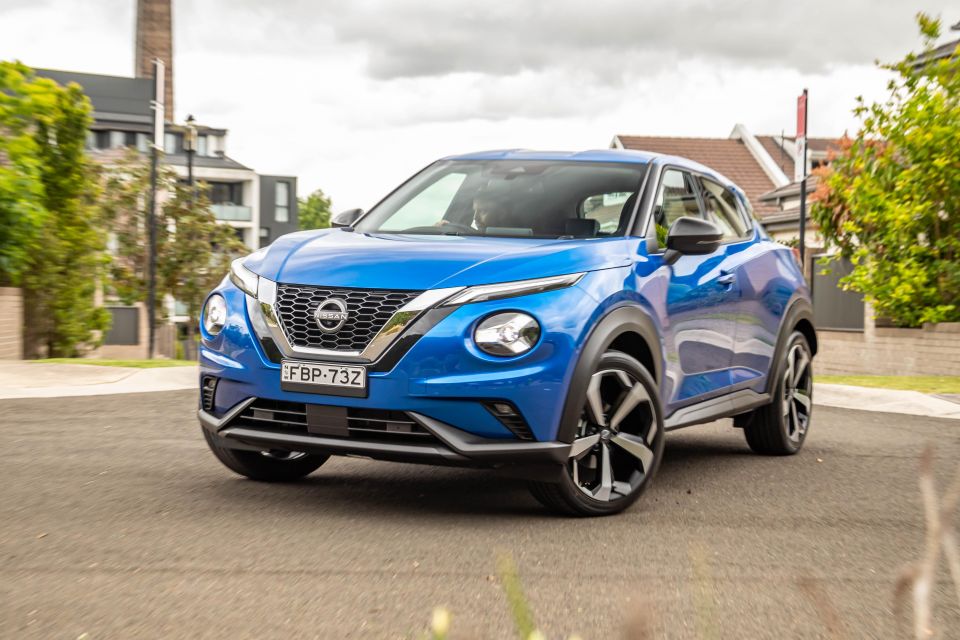
The biggest annoyance with this car is the powertrain. The downsized turbocharged engine paired with a slow-thinking dual-clutch transmission means it can be extremely tedious to drive at low speeds. These include parking manoeuvres, intersections, or trying to get away from traffic lights.
There’s some tremendous lag at times in the Standard drive mode, so much so that it can feel unsafe, especially if you are uninitiated with this type of powertrain.
And if you don’t have the Auto Hold function engaged, it will roll back, or roll forward, whilst in gear when you are attempting to shift between reverse and drive, or vice versa.
This momentary rollback means that you have to be more active with your feet in this car – far more than you would in other vehicles with similar powertrains.
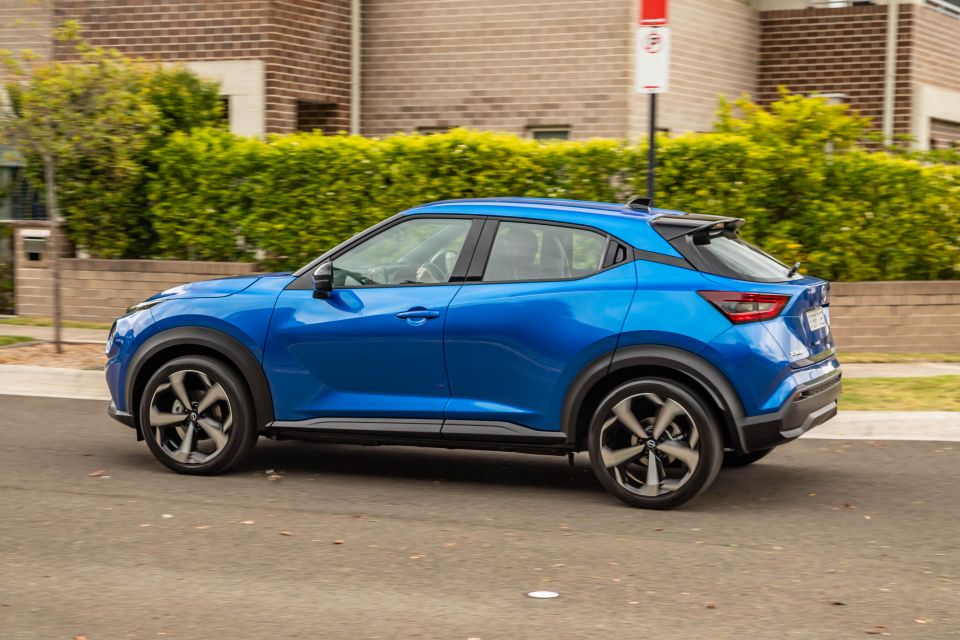
There is a solution though. If you have Auto Hold engaged put the car in the Sport drive mode and it will be more manageable.
Just make sure that you hold your foot on the brake, so the Auto Hold engages (you will see the icon on the instrument cluster), and then you will be able to take off from a standstill with less of that nerve-wracking feeling. It doesn’t completely obliterate it, though.
It can still feel like it is breathless from a standstill because of the lack of torque low in the rev range, and this is most evident if there’s any form of incline where you are parked. Further to that, if you have stopped facing up a hill, you may squeal the tyres when you drive away, especially if the car is in Sport mode.
All of this makes the Nissan Juke a difficult car to recommend for someone who is looking for a small SUV that will spend much of its life in stop-start driving.
However, if you’re the sort of person who does long distance commuting, spending hours a day in the car on motorways, rather than in traffic jams, this could be a pretty good option for you.
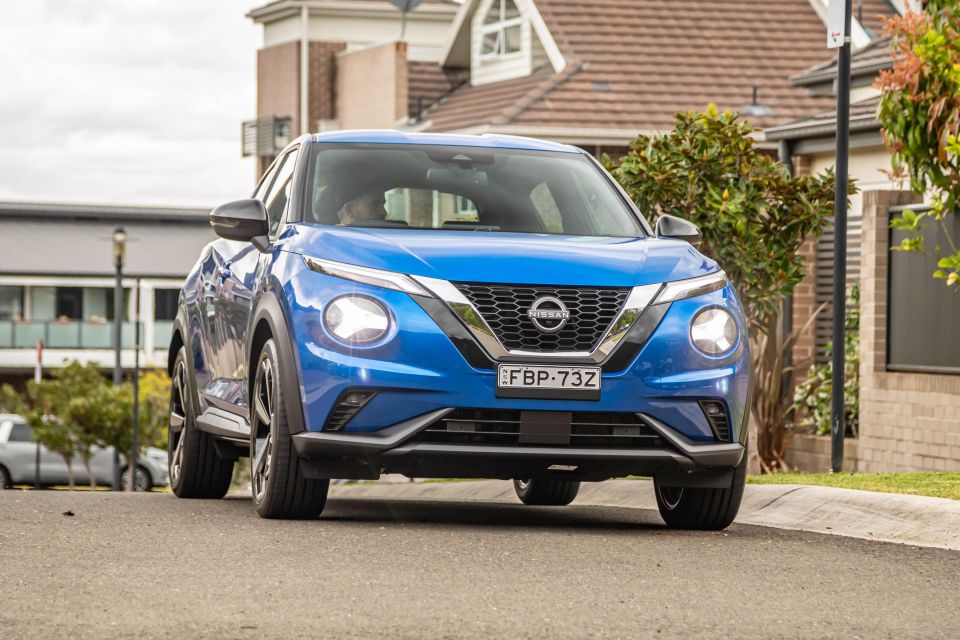
The reason I say that is because at higher speeds it gets along fine. You don’t have to deal with the low-speed engine and transmission miscommunication, and if you do need to suddenly accelerate – even in the Standard drive mode – it is pretty quick to react. It’s even quicker in Sport mode, as you would expect.
Plus, the longer-than-average service intervals (20,000km) could make this little SUV stack up nicely. But if you plan to do 20,000km of urban running only per year, this will not be the right car for you.
Powertrain aside, this car does have some nice attributes when it comes to the drive experience. Personally, I like the way that it rides, steers and handles.
The steering has a nice amount of weight to it, but is also quite direct and responsive to sudden inputs, which means that it feels more nimble and zippy than some rivals.
The ride is a little bit on the firm side – especially with 19-inch alloy wheels on such a tiny little car with quite a short wheelbase.
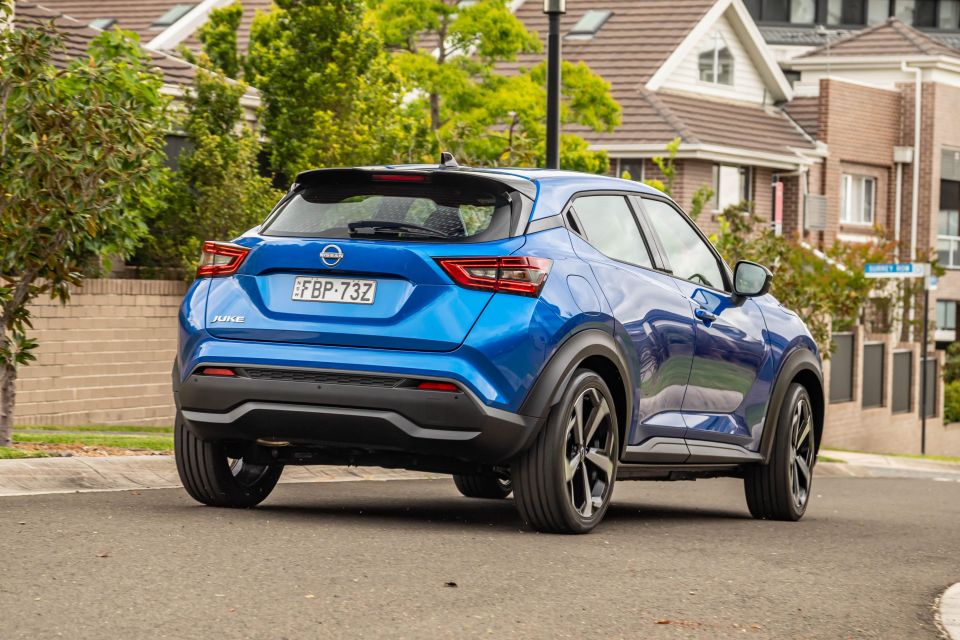
However, it has a level of surefootedness when the surface is flat that makes it feel quite enjoyable for freeway runs. It handles well in twisty corners, too.
There are some elements to this drive experience that are positive, and some seriously negative ones as well. What a shame that such a well packaged and fun little car to drive has a powertrain that is so difficult to deal with for urban duties; where it would otherwise do its best job for the majority of consumers.
But let me say this – I would easily have it over one of those cheaper Chinese models I’ve mentioned. I find that it’s a far more liveable option than those, and it doesn’t have anywhere near as frustrating, safety intervention technology to deal with, too.
Okay, so if you’re still sold on the idea of a Juke and you’ve read this far, here’s why I think the ST-L might be the pick of the range.
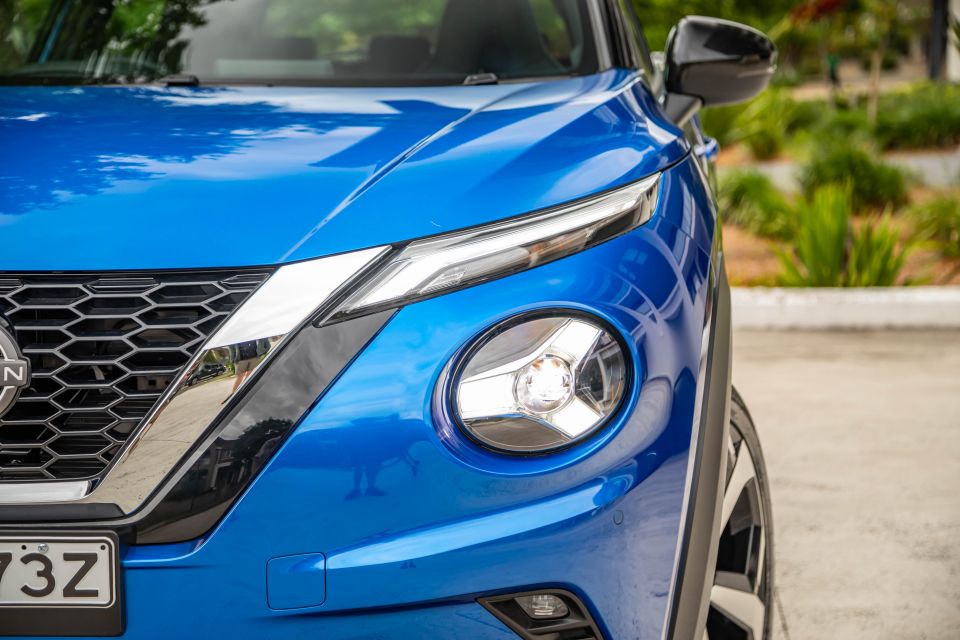

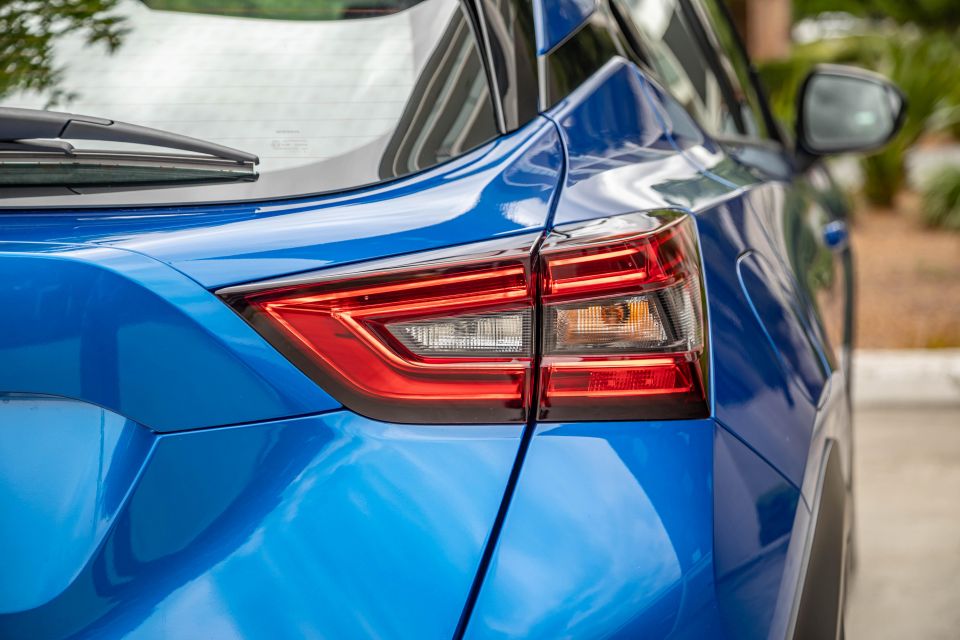
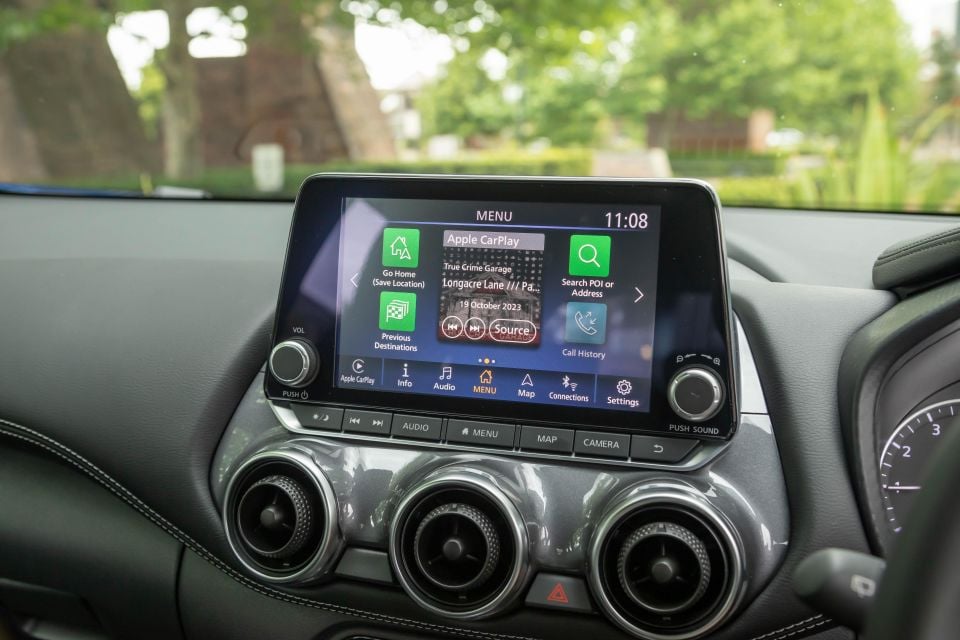
Where expert car reviews meet expert car buying – CarExpert gives you trusted advice, personalised service and real savings on your next new car.
Equipment highlights include:
That is a long list of standard kit. And then there’s the safety tech, too.
The Nissan Juke has a five-star ANCAP safety rating based on testing conducted in 2019.
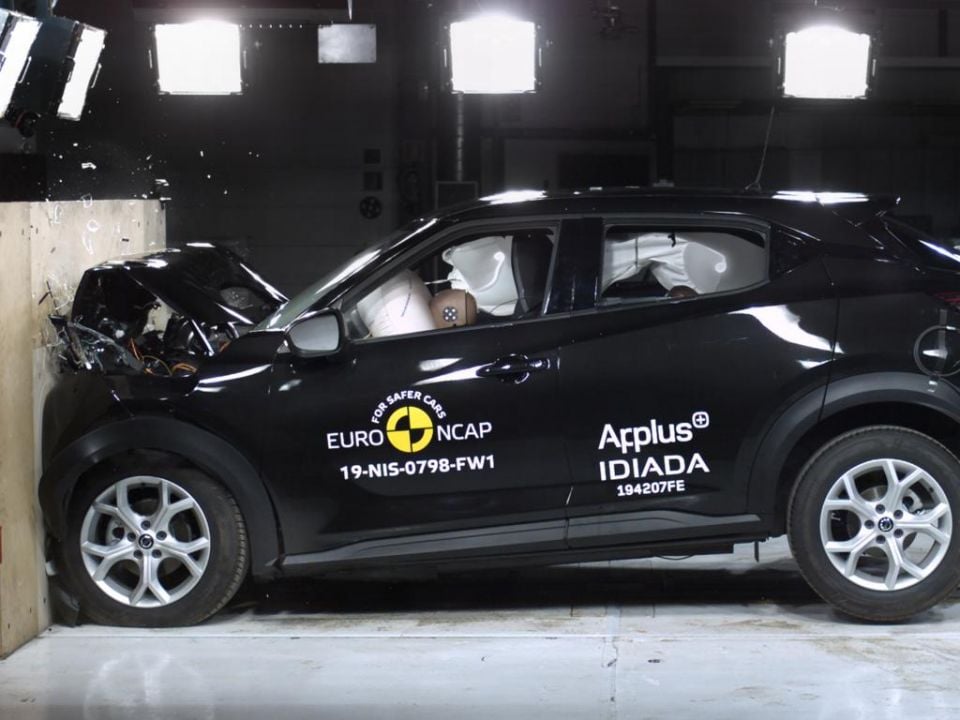
It achieved an adult protection score of 94 per cent, child occupant protection score of 87 per cent, vulnerable road user protection score of 81 per cent, and safety assist score of 71 per cent. Pretty solid numbers.
The Juke also has a solid list of standard safety technology across the range, though it does seem to make sense to spend up to this level for a few nice extras.
Standard safety features include:
Juke ST+ adds:
Juke ST-L adds:
The Nissan Juke is backed by a five-year, unlimited-kilometre warranty with five years of roadside assist.

As mentioned earlier, the Juke has longer-than-average distance intervals, with maintenance due every 12 months or 20,000km. Buyers will have the choice of a pay-as-you-go servicing plan, or prepaid service plans, available for three years ($1307), four years ($1801) or five years ($2148).
The prepaid option will save you a few hundred bucks over pay-as-you-go, and just take note that the sixth service is a bigg’n – current capped service prices for the first six visits are: $343, $597, $592, $549, $386, $1521. Yikes.
This is quite a confusing – and confused – little car.
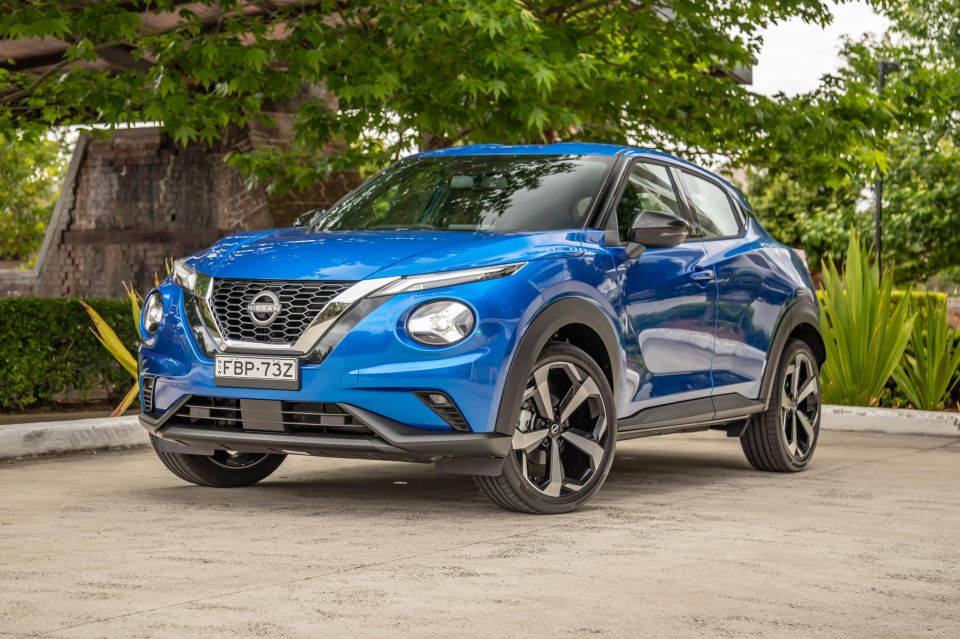
It doesn’t really do what a car of this size should, as its tetchy powertrain doesn’t make for a good urban option. It really requires too much thinking and preparation to make it a simple ‘get in and go’ option for buyers.
If you don’t plan to spend all of your time in traffic jams as you’re a long distance commuter, or live in the country for example, then this is a stylish and pretty smartly-packaged little SUV.
That’s probably a small pool of buyers however, and might be the reason it only sells in small numbers.
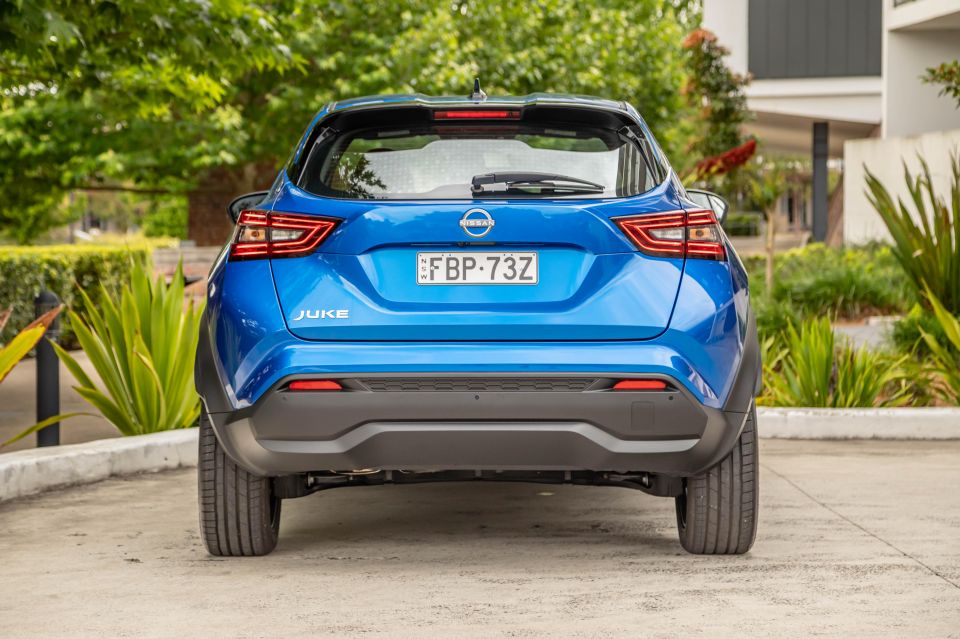
Click the images for the full gallery
BUY: Nissan Juke MORE: Everything Nissan Juke
Where expert car reviews meet expert car buying – CarExpert gives you trusted advice, personalised service and real savings on your next new car.
Matt has more than a decade of experience in automotive journalism, and loves exploring the pros and cons of new cars, delving into deep-dive industry stories, and going for a drive just for the fun of it.


Damion Smy
14 Hours Ago


CarExpert.com.au
5 Days Ago


Damion Smy
5 Days Ago


Damion Smy
6 Days Ago


Josh Nevett
6 Days Ago


Max Davies
6 Days Ago